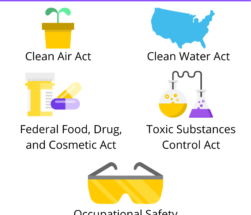In today’s fast-paced world, technology plays a vital role in the success of businesses. From advanced machinery to complex computer systems, every organization relies on various technological solutions. However, to ensure their seamless operation, it is crucial to implement effective facility maintenance practices. In this article, we will delve into the best practices for maintaining facilities in the tech industry, highlighting key strategies and approaches to optimize performance and efficiency.
1. Regular Equipment Inspections
To prevent unexpected downtime and costly repairs, it is essential to conduct regular inspections of critical equipment. This includes servers, data storage systems, cooling systems, power backups, and more. Regular inspections help identify potential issues before they escalate and allow for timely maintenance, ensuring the smooth functioning of technological infrastructure.
2. Implement Preventive Maintenance Programs
Preventive maintenance is a proactive approach that focuses on regular upkeep and servicing of equipment. By implementing preventive maintenance programs, companies can minimize downtime, extend the lifespan of equipment, and reduce the likelihood of major breakdowns. This includes tasks such as cleaning, lubricating, replacing worn-out parts, and conducting performance tests.
3. Invest in Condition Monitoring Systems
Condition monitoring systems utilize advanced sensors and data analytics to assess the health of equipment. By continuously monitoring parameters like temperature, vibration, and power consumption, these systems can detect early signs of wear and tear or potential malfunctions. Real-time monitoring enables predictive maintenance, allowing technicians to schedule repairs or replacements before critical failures occur.
4. Regular Software Updates and Patches
In the rapidly evolving tech landscape, staying up-to-date with software updates and patches is paramount. Updated software not only enhances performance but also addresses security vulnerabilities. Regularly installing updates and patches ensures that systems remain protected against cyber threats and that any bugs or glitches are resolved promptly, improving overall efficiency.
5. Implement Effective Change Management
Change is inevitable in the tech industry. Whether it’s upgrading infrastructure or adopting new technologies, change management plays a crucial role in facility maintenance. Establishing a structured change management process helps mitigate risks associated with changes, reduces downtime, and ensures seamless transitions. This includes thorough planning, testing, and documenting changes to minimize any adverse impact.
6. Develop Comprehensive Disaster Recovery Plans
Unforeseen events such as natural disasters or system failures can significantly disrupt facility operations. Developing comprehensive disaster recovery plans is vital to ensure business continuity. These plans should outline backup procedures, recovery measures, and alternative infrastructure arrangements to minimize downtime and data loss. Regularly testing and updating these plans is crucial to adapt to changing business needs and technological advancements.
7. Train and Educate Staff
Keeping staff updated on maintenance protocols, safety procedures, and emerging technologies is fundamental for optimal facility maintenance. Regular training sessions ensure that employees are knowledgeable about best practices and understand their roles in maintaining equipment and systems. This empowers them to identify and report potential issues, contribute to preventive maintenance efforts, and minimize risks.
8. Maintain Clean and Organized Facilities
It is essential to maintain clean and organized facilities to support efficient maintenance operations. Regular cleaning reduces the accumulation of dust, which can impact sensitive equipment and compromise performance. Additionally, well-organized facilities improve accessibility, making it easier for technicians to carry out inspections, repairs, and replacements swiftly.
Conclusion
In the ever-evolving tech industry, implementing effective facility maintenance practices is crucial to ensure optimal performance and efficiency. Regular equipment inspections, preventive maintenance programs, condition monitoring systems, software updates, effective change management, comprehensive disaster recovery plans, staff training, and maintaining clean facilities are all essential components of a successful maintenance strategy. By prioritizing these best practices, businesses can minimize downtime, maximize the lifespan of equipment, and fully leverage the benefits of technology in their operations.








